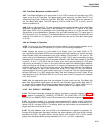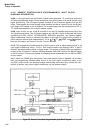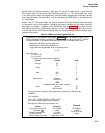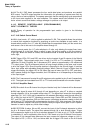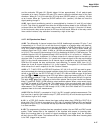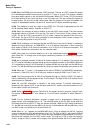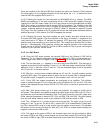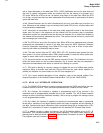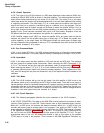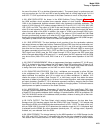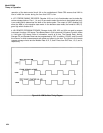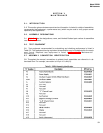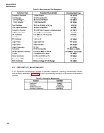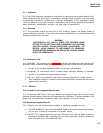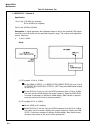
Model 5328A
Theory of Operation
talk or listen addresses on the data lines (DIO1—DIO8). Addresses are set into each device at
the time of system configuration either by switches built into the device or by jumpers on a
PC board. While the ATN line is low, all devices must listen to the data lines. When the ATN
line is high, only devices that have been addressed will actively send or receive data. All others
ignore the data lines.
4-166. Several listeners can be active simultaneously but only one talker can be active at a
time. Whenever a talk address is put on the data lines (while ATN is low), all other talkers will
be automatically unaddressed.
4-167. Information is transmitted on the data lines under sequential control of the three hand-
shake lines. No step in the sequence can be initiated until the previous step is completed.
Information transfer can proceed as fast as devices can respond, but no faster than allowed by
the slowest device presently addressed as active. This permits several devices to receive the
same message byte concurrently.
4-168. The ATN line is one of the five control lines. When ATN is low, addresses and universal
commands are transmitted on seven of the data lines using the ASCII (American Standard
Code for Information Interchange) code. When ATN is high, any code of 8 bits or less under-
stood by both talker and listener(s) may be used.
4-169. The other control lines are IFC, REN, SRQ, EOI. IFC (interface clear) places the inter-
face system in a known quiescent state. REN (remote enable) is used with other coded mes-
sages to select either local or remote control of each device.
4-170. Any active device can set the SRQ (service request) line low. This indicates to the con-
troller that some device on the bus wants attention, say a counter that has just completed a
time-interval measurement and wants to transmit the reading to a printer.
4-171. EOI (end or identify) is used by a device to indicate the end of a multiple-byte transfer
sequence. When a controller sets both the ATN and EOI lines low, each device capable of a
parallel poll indicates its current status on the DIO line assigned to it.
4-172. For a more detailed description of bus operation, refer to the manual entitled “Con-
densed Description of the Hewlett-Packard Interface Bus”, HP Part No. 59401-90030.
4-173. HP-IB A15 INTERFACE OPERATION
4-174. The 5328A HP-IB Interface is used to remotely program the 5328A and deliver the mea-
surement results to the bus. Thus, the board operates both as a listener and as a talker.
4175. As a listener, the interface is capable of programming most of the controls in the
mainframe and all programmable modules that may be installed. The HP-IB board contains
storage circuits to control the mainframe remotely, and is set up to program the storage circuits
in any programmable module.
4-176. As a talker, the interface is capable of outputting the measurement data in exponential
format with a mantissa of nine digits (leading zeros are output as spaces) and an exponent of
one digit. Overflow and signal information is also contained along with a carriage return (CR),
linefeed (LF) termination ot make it compatible with the standard HP-IB serial data format.
4-177. In addition to being a talker and listener, the HP-IB Interface follows a set of HP-1 B
commands. This includes complete service request capability, The ASCII codes used for ad-
dressing and for data are shown in Table 3-7. Address switch information is shown in Table 3-4.
The program code set is shown in Table 3-5.
4-21



